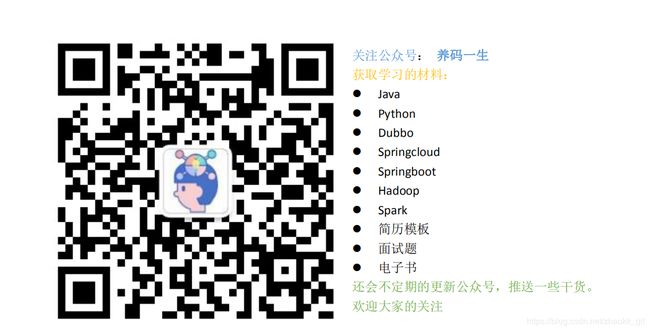亲测javaWeb的Excel的文件导入
个人博客传送门
最近在做一个web项目,需要写一个Excel文件的导入,由于本猿是个刚入行不就的萌新,所以找到了一些文章研究了一下,但是讲的都比较混乱,于是在一边借阅一边的摸索中完成了导入,先说一下思路:
1.首先是将需要导入的文档转换成流的形式。
2.判断excel文件的类型是.xlsx还是.xls格式的,将对应的格式转换成Workbook所对应的格式,到了此处基本上一个excl文件就已经被导入了,并且存储为对应的excl格式了。
3.此方法workbook.getSheetAt()可以得到你的这个文件上的所有的sheet,我的sheet默认只有一个所以我直接取的是sheet(0)。
4.然后遍历此sheet得到所有的Row,将每行的数据add到list中并且返回。
5.然后遍历每一行的,得到对应的元素上的信息,这里需要注意一下,这个row.getCell(0)方法是从0开始的,然后就得到了你所需要到倒数的数据了,剩下的事情就是业务的处理啦。
下来我上一下,我的具体的做法。
一.环境和所需要引入的jar包。
环境:
ssm+maven
具体的文件的上传可以查看我的上一篇博客
基于springMVC的文件上传和下载
这里需要注意的是这里我们需要引入支持解析excl的工具类poi,我是直接maven直接导入的,如下:
org.apache.poi
poi-ooxml
3.17
org.apache.poi
poi
3.17
org.apache.poi
poi-ooxml-schemas
3.17
org.apache.xmlbeans
xmlbeans
2.6.0
到此,前期的环境的准备工作就已经全部完成了。
二.代码
导入的方法的接口
这里需要注意下,这里的Result的是我自己定义的一个类,你们在引用的时候自己重写下就可以了,用Object就可以,返回个map就可以了。
import com.yonyouFintech.yangfan.commons.Result;
import com.yonyouFintech.yangfan.commons.util.DateUtil;
import com.yonyouFintech.yangfan.commons.util.ExcelUtil;
import com.yonyouFintech.yangfan.domain.YfBibliographic;
import com.yonyouFintech.yangfan.service.YfBibliographicService;
import org.apache.poi.ss.usermodel.Cell;
import org.apache.poi.ss.usermodel.Row;
import org.springframework.beans.factory.annotation.Autowired;
import org.springframework.web.bind.annotation.RequestMapping;
import org.springframework.web.bind.annotation.RequestMethod;
import org.springframework.web.bind.annotation.RequestParam;
import org.springframework.web.bind.annotation.RestController;
import org.springframework.web.multipart.MultipartFile;
import javax.servlet.http.HttpServletRequest;
import java.io.InputStream;
import java.util.ArrayList;
import java.util.List;
@RestController
public class yfImportExclController {
@Autowired
private YfBibliographicService yfBibliographicService;
@RequestMapping(value = "/exclImport",method = RequestMethod.POST)
public Result importExcl(@RequestParam("file") MultipartFile excl, HttpServletRequest request){
Result result = new Result();
if(!excl.isEmpty()){//说明文件不为空
try {
String fileName = excl.getOriginalFilename();
InputStream is = excl.getInputStream();//转化为流的形式
List listMer = new ArrayList();
List list = ExcelUtil.getExcelRead(fileName,is, true);
//首先是读取行 也就是一行一行读,然后在取到列,遍历行里面的行,根据行得到列的值
for (Row row : list) {
/****************得到每个元素的值start**********************/
Cell cell_0 = row.getCell(0);
Cell cell_1 = row.getCell(1);
Cell cell_2 = row.getCell(2);
Cell cell_3 = row.getCell(3);
/*****************得到每个元素的值end**********************/
/******************解析每个元素的值start*******************/
//得到列的值,也就是你需要解析的字段的值
String bookName = ExcelUtil.getValue(cell_0);
String editor = ExcelUtil.getValue(cell_1);
String express = ExcelUtil.getValue(cell_2);
String version = ExcelUtil.getValue(cell_3);
/******************解析每个元素的值end*******************/
/****************将读取出来的数值进行包装start***********/
YfBibliographic yfBibliographic = new YfBibliographic();
yfBibliographic.setName(bookName);
yfBibliographic.setAuthor(editor);
yfBibliographic.setPress(express);
yfBibliographic.setEdition(version);
yfBibliographic.setStatus("1");
yfBibliographic.setExtend1(DateUtil.getCurDateStr());
listMer.add(yfBibliographic);
/**************将读取出来的数值进行包装end**************/
}
if(listMer.size()>0){
for (YfBibliographic item:listMer) {
yfBibliographicService.insertYfBibliographic(item);
}
}
result.setSuccess(true);
result.setSuccessMessage("导入成功!");
}catch (Exception e){
e.printStackTrace();
result.setSuccess(false);
result.setErrorMessage("导入出现异常!");
}
}else{
result.setSuccess(false);
result.setErrorMessage("导入的文件为空!");
}
return result;
}
}
判断文件类型的工具类
/**
* @author zhaokk
* @Date 2017-12-01
* 工具类验证Excel文档
*/
public class WDWUtil {
/**
* @描述:是否是2003的excel,返回true是2003
* @param filePath
* @return
*/
public static boolean isExcel2003(String filePath) {
return filePath.matches("^.+\\.(?i)(xls)$");
}
/**
* @描述:是否是2007的excel,返回true是2007
* @param filePath
* @return
*/
public static boolean isExcel2007(String filePath) {
return filePath.matches("^.+\\.(?i)(xlsx)$");
}
/**
* 验证是否是EXCEL文件
* @param filePath
* @return
*/
public static boolean validateExcel(String filePath){
if (filePath == null || !(isExcel2003(filePath) || isExcel2007(filePath))){
return false;
}
return true;
}
}
获取excel表格,每行的数据的类
import org.apache.poi.hssf.usermodel.HSSFCell;
import org.apache.poi.hssf.usermodel.HSSFWorkbook;
import org.apache.poi.ss.usermodel.Cell;
import org.apache.poi.ss.usermodel.Row;
import org.apache.poi.ss.usermodel.Sheet;
import org.apache.poi.ss.usermodel.Workbook;
import org.apache.poi.xssf.usermodel.XSSFWorkbook;
import java.io.InputStream;
import java.math.BigDecimal;
import java.util.ArrayList;
import java.util.List;
public class ExcelUtil {
//读取文件的方法
/**
* 获取解析文件行数据
* @param fileName : 文件地址
* @param isTitle : 是否过滤第一行解析
* @return
* @throws Exception
*/
public static List getExcelRead(String fileName, InputStream is, boolean isTitle) throws Exception{
try {
//判断其兼容版本 调用了判断版本的方法
Workbook workbook = getWorkbook(fileName,is);
Sheet sheet = workbook.getSheetAt(0);
int count = 0;
List list = new ArrayList();
for (Row row : sheet) {
// 跳过第一行的目录
if (count == 0 && isTitle) {
count++;
continue;
}
list.add(row);
}
return list;
} catch (Exception e) {
throw e;
}
}
//判断版本的方法
public static Workbook getWorkbook(String fileName,InputStream is) throws Exception{
Workbook workbook = null;
try {
/** 判断文件的类型,是2003还是2007 */
boolean isExcel2003 = true;
if (WDWUtil.isExcel2007(fileName)) {
isExcel2003 = false;
}
if (isExcel2003) {
workbook = new HSSFWorkbook(is);
} else {
workbook = new XSSFWorkbook(is);
}
} catch (Exception e) {
throw e;
}
return workbook;
}
//得到celL值的方法:
public static String getValue(Cell cell){
if(cell.getCellType() == HSSFCell.CELL_TYPE_BOOLEAN){
return String.valueOf(cell.getBooleanCellValue());
}else if(cell.getCellType() == HSSFCell.CELL_TYPE_NUMERIC){
double value = cell.getNumericCellValue();
return new BigDecimal(value).toString();
}else if (cell.getCellType() ==HSSFCell.CELL_TYPE_STRING){
return String.valueOf(cell.getStringCellValue());
}else{
return String.valueOf(cell.getStringCellValue());
}
}
}
以上,就是本猿的导入的方法和思路,亲测有效,完美运行,作为一个新手猿,可能会有很多不足,请诸君在阅览的时候,发现有不足的地方请多多指教,转载请注明出处。
